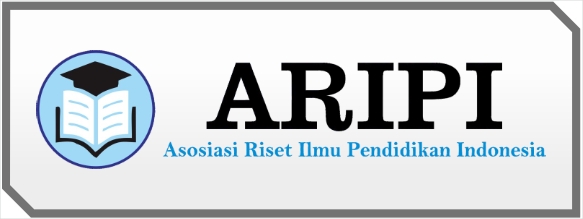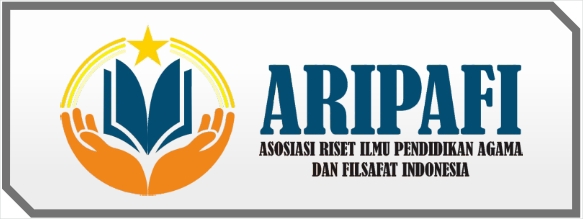Efektifitas Media Sosial Sebagai Media Pengajaran Iman Kristen
DOI:
https://doi.org/10.59581/jpat-widyakarya.v1i2.248Keywords:
Social media, teaching, Christian faith, effectiveness.Abstract
Social media has become an important part of modern human life and has influenced various aspects of life, including religion. In the context of the Christian faith, social media can be used as a medium for teaching and spreading religious messages. The purpose of this research is to explore the effectiveness of social media as a medium for teaching Christian faith. This research was conducted by surveying social media users who follow Christian accounts and are active in participating in online religious activities. Respondents were given a questionnaire to assess their experience in using social media as a medium for teaching Christian faith, including the type of content they liked and their level of involvement in online religious activities. The results of this study indicate that social media can be effective as a medium for teaching Christian faith. Respondents indicated that they had high levels of involvement in online religious activities and that they preferred to obtain religious information and teaching through social media rather than traditional sources such as books or seminars. The types of content most liked by respondents were quotes from the Bible, teaching videos, and personal religious experiences. However, this research also shows that the effectiveness of social media as a medium for teaching Christian faith can be influenced by various factors, such as the quality of the content and the user's trust in information sources. Therefore, there needs to be continuous monitoring and evaluation of content posted on social media so that the religious messages conveyed can be well received by social media users.
References
Cahyana Kumbul Widada, “Mengambil Manfaat Media Sosial Dalam Pengembangan Layanan,” Journal of Documentation and Information Science 2, no. 1 (2018): 23–30.
Yuhdi Fahrimal, “Netiquette: Etika Jejaring Sosial Generasi Milenial Dalam Media Sosial,” Jurnal Penelitian Pers dan Komunikasi Pembangunan 22, no. 1 (2018): 69–78.
Astari Clara Sari et al., “Komunikasi Dan Media Sosial,” Jurnal The Messenger 3, no. 2 (2018): 69, https://www.researchgate.net/profile/Astari-Clara-Sari/publication/329998890_KOMUNIKASI_DAN_MEDIA_SOSIAL/links/5c2f3d83299bf12be3ab90d2/KOMUNIKASI-DAN-MEDIA-SOSIAL.pdf.
Wilga Secsio Ratsja Putri, Nunung Nurwati, and Meilanny Budiarti S., “Pengaruh Media Sosial Terhadap Perilaku Remaja,” Prosiding Penelitian dan Pengabdian kepada Masyarakat 3, no. 1 (2016).
Izzul Islamy, “Penelitian Survei Dalam Pembelajaran Dan Pengajaran Bahasa Inggris,” Japanese Society of Biofeedback Research 19, no. 5 (2019): 463–466.
Erna Kusumawati, “Efektivitas Kerja Guru,” JIIP - Jurnal Ilmiah Ilmu Pendidikan 6, no. 3 (2023): 1487–1492.
SHOFIANA SYAM, “Pengaruh Efektifitas Dan Efisiensi Kerja Terhadap Kinerja Pegawai Pada Kantor Kecamatan Banggae Timur,” Jurnal Ilmu Manajemen Profitability 4, no. 2 (2020): 128–152.
Arif Tri Atmaja, Djoko Santoso, and Patni Ninghardjanti, “Penerapan Sistem Otomatisasi Administrasi Untuk Meningkatkan Efektivitas Dan Efisiensi Kerja Di Bidang Pendapatan Dinas Perdagangan Kota Surakarta,” Jurnal Informasi dan Komunikasi Administrasi Perkantoran 2, no. 2 (2018): 1–14.
Boyd, D., & Ellison, N. (2007). Social network sites: Definition, history, and scholarship. Journal of Computer-Mediated Communication, 13(1), 210-230.
Kuss, D. J., & Griffiths, M. D. (2017). Social networking sites and addiction: Ten lessons learned. International Journal of Environmental Research and Public Health, 14(3), 311.
Errika Dwi Setya Watie, “Komunikasi Dan Media Sosial (Communications and Social Media),” Jurnal The Messenger 3, no. 2 (2016): 69.
Azwita Healty, “Strategi Membentengi Pola Komunikasi Pengguna Sosial Media Terhadap Pelanggaran Uu Ite,” Jurnal Network Media, no. 224 (2018): 1–16.
Nurul Istiani and Athoillah Islamy, “Fikih Media Sosial Di Indonesia,” Asy Syar’Iyyah: Jurnal Ilmu Syari’Ah Dan Perbankan Islam 5, no. 2 (2020): 202–225.
Putri, Nurwati, and S., “Pengaruh Media Sosial Terhadap Perilaku Remaja.”
Nur Ainiyah, “Remaja Millenial Dan Media Sosial: Media Sosial Sebagai Media Informasi Pendidikan Bagi Remaja Millenial,” Jurnal Pendidikan Islam Indonesia 2, no. 2 (2018): 221–236.
Silvia Fardila Soliha, “Tingkat Ketergantungan Pengguna Media Sosial Dan Kecemasan Sosial [Level of Dependence on Users of Social Media and Social Anxiety],” Interaksi: Jurnal Ilmu Komunikasi 4, no. 1 (2015): 1–10, https://ejournal.undip.ac.id/index.php/interaksi/article/view/9730/7798.
Widada, “Mengambil Manfaat Media Sosial Dalam Pengembangan Layanan.”
Putri, Nurwati, and S., “Pengaruh Media Sosial Terhadap Perilaku Remaja.”
Djoko Sukono, “Alkitab: Penyataan Allah Yang Diilhamkan,” PASCA: Jurnal Teologi dan Pendidikan Agama Kristen 15, no. 1 (2019): 28–34.
Eduward Purba, “Paradigma Pentingnya Pengajaran Doktrin Sebagai Bagian Dari Total Quality,” Magnum Opus 2, no. 1 (2020): 27–35.
Dalam Pengajaran et al., “*1 *2 *1 *2” 3, no. 2 (2021): 115–126.
Hardi Budiyana, “Roh Kudus Dalam Proses Pembelajaran Pendidikankristen Mewujudkan Pengajaran Kristen Yang Mengandung Nilai Kekal,” Jurnal Teologi Berita Hidup 1, no. 1 (2018): 57–77.
Igo Satria, “Iman Kristen Yang Menyelamatkan” 1, no. 2 (2023).
Ferderika Toulasik, “Ajaran Soteriologi Dasar Iman Remaja Kristen Dalam Menghadapi Fenomena Pacaran Beda Agama,” Anakrino: Jurnal Teologi dan Pendidikan Agama Kristen 2, no. 1 (2020): 73–74.














